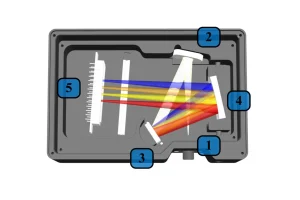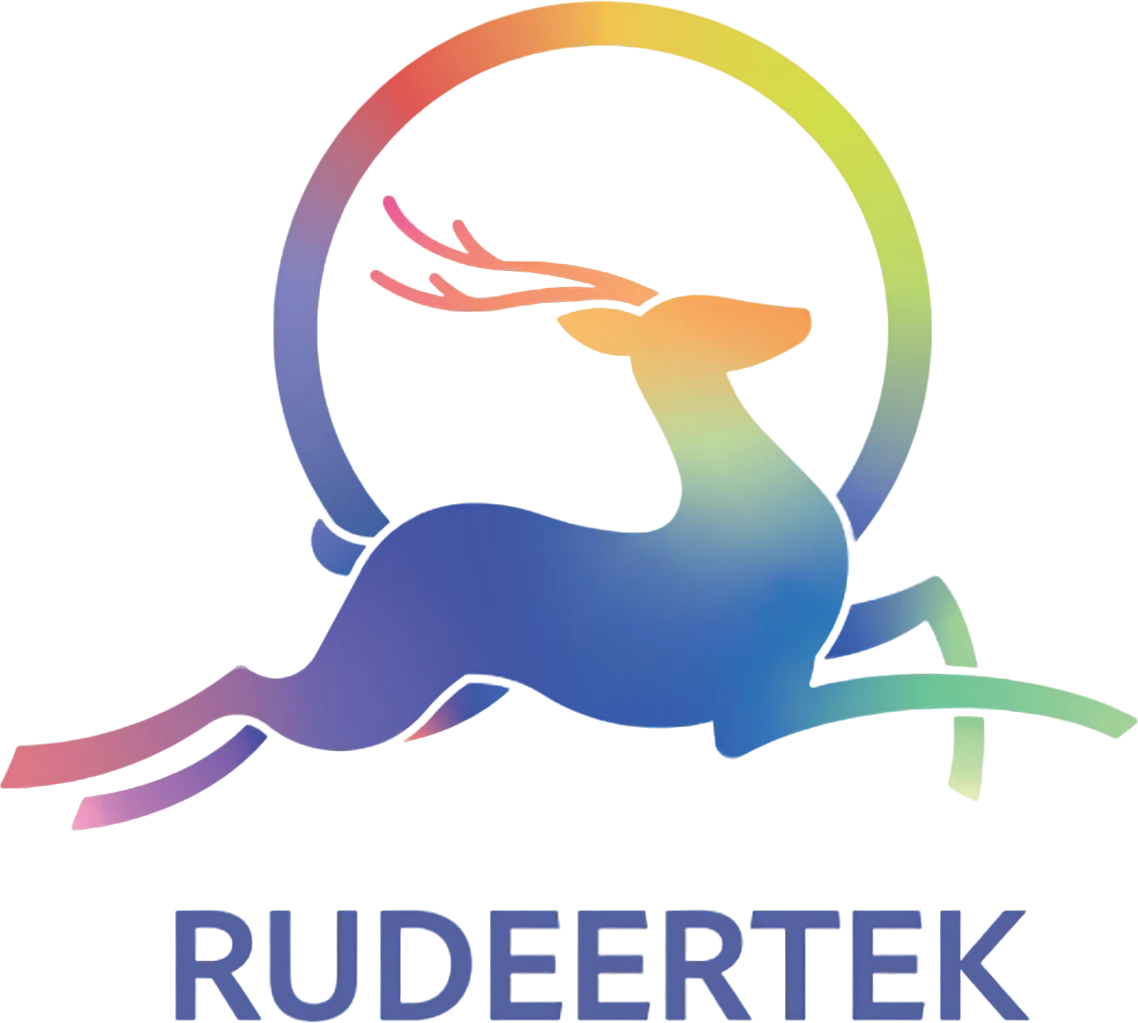A spectrometer is an instrument used to detect the spectral characteristics of optical signals, which can decompose the beam into different wavelengths or frequency components and measure the intensity of each wavelength or frequency component.
A typical grating spectrometer consists of the following main parts
1.Entrance Slit:It is used to limit the amount of light entering the instrument and the size of the light.
2.Optical System:It is used to change the direction of light propagation to achieve light collimation, dispersion and focusing.
3.Dispersive elements:It is an important part of the optical system of the spectrometer, and its function is to separate the dispersion of light of different wavelengths in space, and the diffraction grating is the most commonly used dispersion element at this stage.
4.Photodetector:The intensity of light signals of different wavelengths is detected by photoelectric conversion. The photodetector can be a CCD/CMOS array or a PMT.
5.Data processing circuits and application software:It is used to process electronic signals and record and analyze spectral data.
Crossed CZERNY-TURNER optical structure
1.Entrance Slit 2. Collimating Mirror 3. Diffraction Grating 4. Focusing Mirror 5. Photodetector
Main performance parameters of micro grating spectrometer
1.Wavelength Range:The range of wavelengths that the spectrometer can detect.
2.Optical Resolution:The smallest wavelength difference that can be resolved by a spectrometer is usually expressed as half-peak full width (FWHM).
3.Sensitivity:The minimum light energy that can be detected by the spectrometer is mainly determined by the photoelectric characteristics of the detector.
4.Dynamic Range:The spectrometer is capable of measuring the ratio of the maximum to the minimum spectral signal.
5.SNR:The ratio of the signal energy level to the noise level of the spectrometer.
6.Spectral acquisition speed:At a certain level of incident light energy, the time it takes for the spectrometer to complete a complete measurement.
The main influencing factors of the performance of miniature grating spectrometers
For miniature grating spectrometers, the above six parameters are closely related and affect each other. There are three main devices that affect the performance of micro grating spectrometers:
1.Entrance Slit:The detector of the spectrometer is to image the light passing through the slit, the size of the slit directly affects the resolution and luminous flux of the spectrometer, generally speaking, the smaller the slit width, the higher the spectral resolution, the smaller the luminous flux.
2.Diffraction grating:The diffraction grating disperses the light irradiated on its working surface in space, and the larger the line density of its working surface, the stronger the dispersion ability. For a given optical platform and CCD detector, spectrometers using large line count gratings have higher spectral resolution, but have a narrower spectral range.
3.Photodetector:The photodetector directly determines the spectral range, sensitivity, resolution and signal-to-noise ratio index of the spectrometer. There is a wide range of photodetectors available today to meet the needs of most detection applications.

